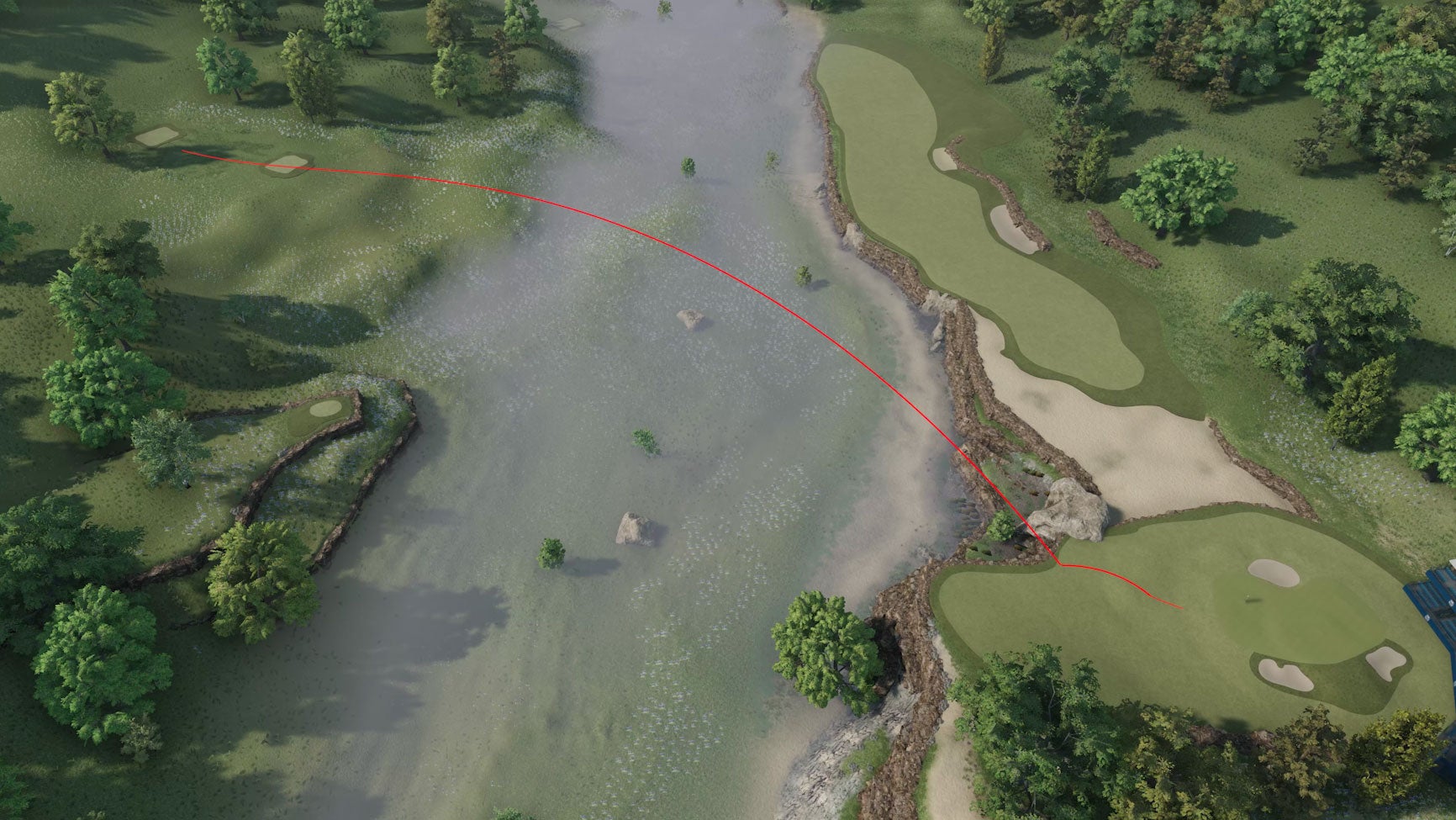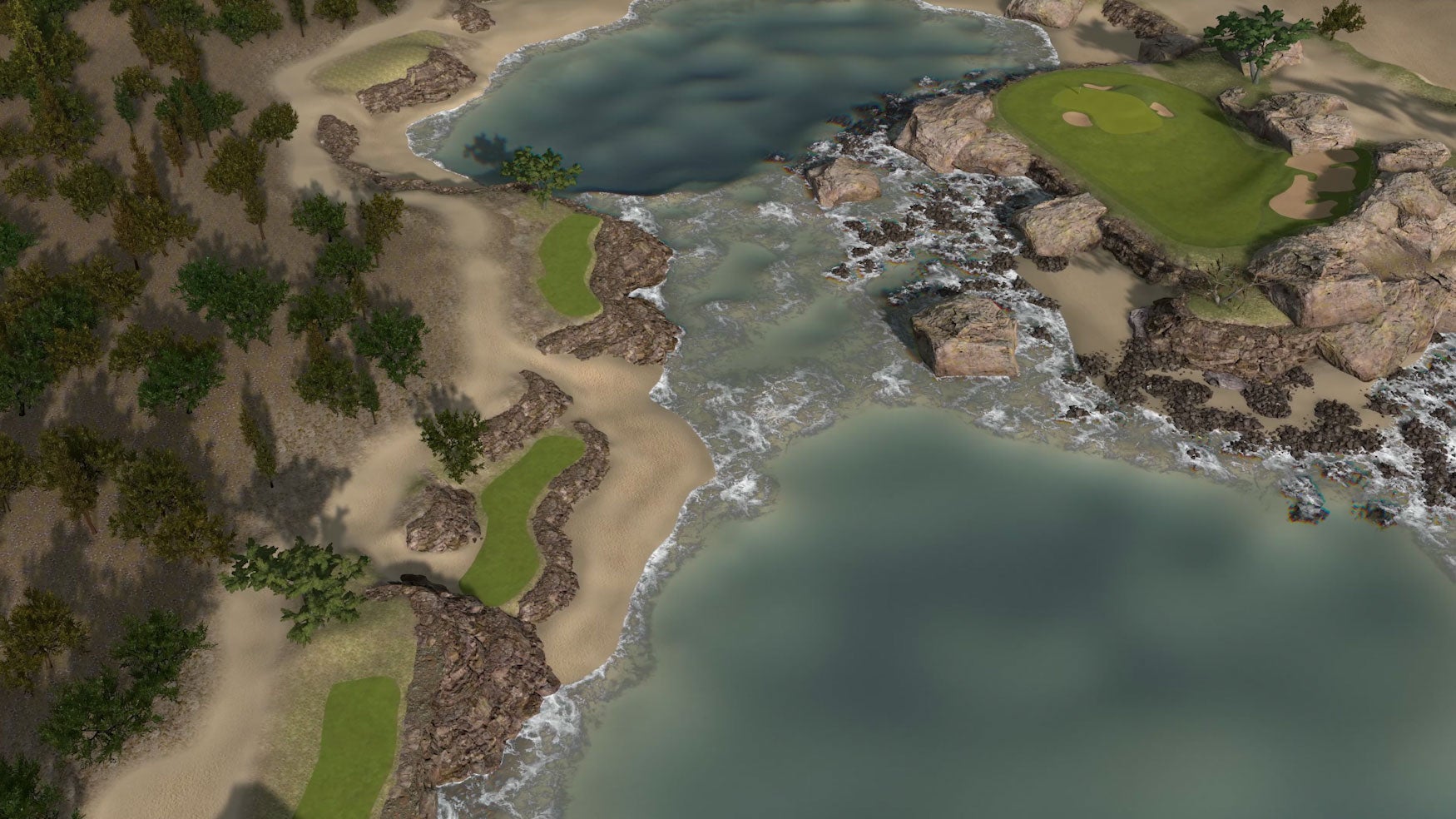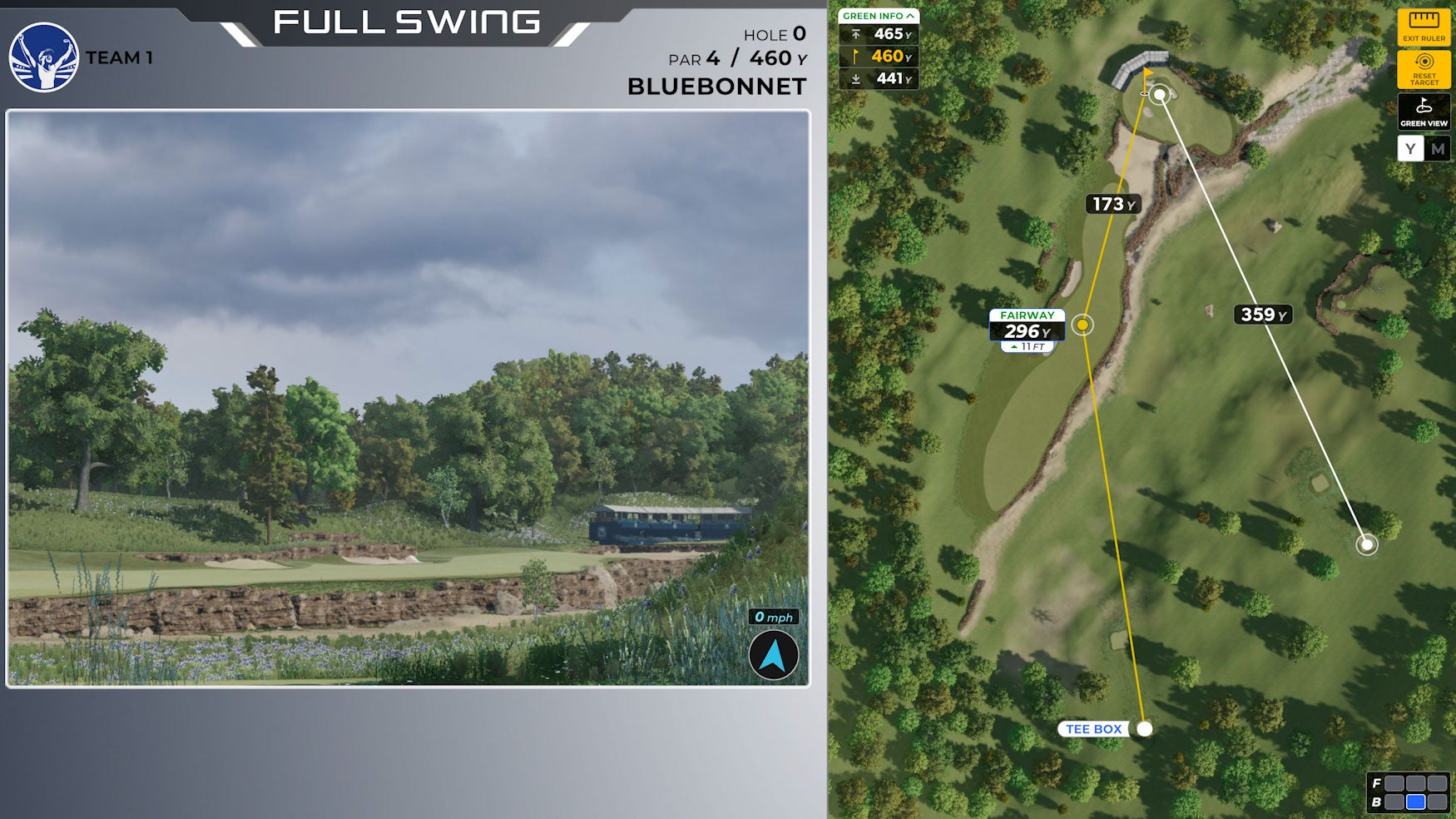
Because the clock ticks down towards the launch of TGL, the prime-time televised indoor golf league backed by Tiger Woods and Rory McIlroy, the important thing elements have fallen into place.
The six 4-player groups of PGA Tour stars have been chosen. The sector has been chosen (custom-built Sofi Stadium, in Palm Seashore Gardens, Fla.). And two of the three course architects have been revealed: Nicklaus Design and Beau Welling Design; the third agency might be introduced later this week.
What they’re constructing is in contrast to something the sport has seen earlier than.
TGL’s first-of-its-kind competitors, which debuts Jan. 7 on ESPN, will comply with a mixed-reality format, with gamers hanging lengthy pictures on digital holes — smacking drives and approaches into an enormous simulator display screen — earlier than hitting their chips and putts to and on an precise inexperienced. That inexperienced, which might rotate 360 levels and morph in its topography to create a dynamic problem, is a powerful feat of engineering. Designing the digital holes took some doing, too.
For that, TGL has tasked its structure companions with creating 30 holes, 15 of which might be performed in shifting rotation all through the season.
A lot of that work is now full.
Early this week, Nicklaus Design, which has developed 439 programs in 46 international locations and 40 states, provided GOLF.com a sneak-peek of two of its TGL holes, together with insights into how they had been created. One is par 4 set in Texas Hill Nation. The opposite is par 3 alongside the California coast.
“It’s the identical however completely different,” Chad Goetz, senior designer at Nicklaus Design stated, when requested what it was wish to shift from real-world to digital design.
From the outset, the architects got loads of inventive freedom and inspired to dream up holes in several landscapes. The work, Goetz stated, got here with each “alternatives and constraints.” On the one hand, they might let their imaginations run wild, freed from widespread design and building issues.
“You’ll be able to design wherever you need with out worrying about budgets or permits,” Goetz stated.
Then again, there have been logistical impositions. The architects had been requested, for example, to attempt to keep away from designs that would depart intermediate-length pictures of some 30 to 70 yards, a form of no-man’s land that might require gamers to hit balls decrease into the outsize TGL display screen than they in any other case would possibly for them to be captured in simulation.
“They’d nearly must hit it into the underside of the display screen for it to work out, as a result of they’re really fairly a methods away from the display screen,” Goetz stated. “So that you’ll see loads of these holes, there’s some form of penal hazard consuming up that 30 to 70 yard house as a result of they don’t wish to attempt to recreate that within the studio.”
Excessive elevation change was one other no-no. In contrast to the human eye, which might shift simply to soak up uphill and downhill views, the digicam on the display screen in TGL might be fastened, unable to seize excessive ups and downs.
“Certainly one of our early designs was a mountain gap the place we tried to push the boundaries,” Goetz stated. “However we realized the specs weren’t going to work.”
These technical constraints apart, the essential rules of excellent design utilized, with the purpose of making compelling challenges and strategic choices that might name for good decision-making underneath TGL’s 40-second shot clock.
Contemplate, for example, the Hill Nation gap.
Nicknamed “Bluebonnet,” it could actually play as both a drivable par-4 or a protracted two-shotter, in a setting studded fittingly with rock outcrop and oaks. From the up tees, rivals will face a carry of simply over 300 yards to a inexperienced that may be positioned with a financial institution on the suitable. Balls touchdown on that financial institution could have a very good probability of bounding onto the placing floor. From the again tees, the opening transforms right into a cape gap, presenting gamers with a alternative of how a lot they wish to attempt to chew off with their drives.
The California par-3, dubbed “Cliffhanger,” has built-in selection, too. Located on a coast, with cypress timber dotting its digital panorama, it could actually play to completely different lengths, maxing out at 250 yards over an ocean inlet. If that makes you consider a sure well-known par-3 on sure well-known course, you’re onto one thing. “You’ll be able to clearly inform we’re taking some stabs on the sixteenth at Cypress Level,” Goetz stated.

Nicklaus Design
Although designing a compelling par-3 was specific difficult, “as a result of it’s one shot, enjoying to the identical inexperienced,” wind, Goetz famous, will add to the intrigue.
“Will probably be a component in TGL,” he stated. “I’ve requested them to let it blow proper on this gap and see if they will trip the wind 250 yards to a small inexperienced.”
As for ushering the designs from idea to actuality, Goetz stated that work adopted acquainted steps.
“I believe all of us just about agree you can’t design straight into the pc, so we all the time begin out drawing by hand,” he stated. From there, the drawings had been digitized by Nicklaus Design’s manufacturing group, after which handed over to TGL’s know-how companion, Full Swing, which inputted the designs into the their modeling software program, yielding a simulated gap.

Nicklaus Design
“It’s been very fascinating to see the way it performs, as a result of I can’t exit and really feel it in the true world like I usually would,” Geotz stated. “It’s this digital factor. It seems like it’s what it’s presupposed to. However except you’ve bought your eyes and toes bodily on it, it’s exhausting to really feel the way it’s going to play. It’s going to be fascinating to see the way it works out.”
To listen to extra from Goetz on designing for TGL, take a look at the video above.










:no_upscale()/cdn.vox-cdn.com/uploads/chorus_asset/file/25835888/2176298339.jpg?w=120&resize=120,86&ssl=1)



